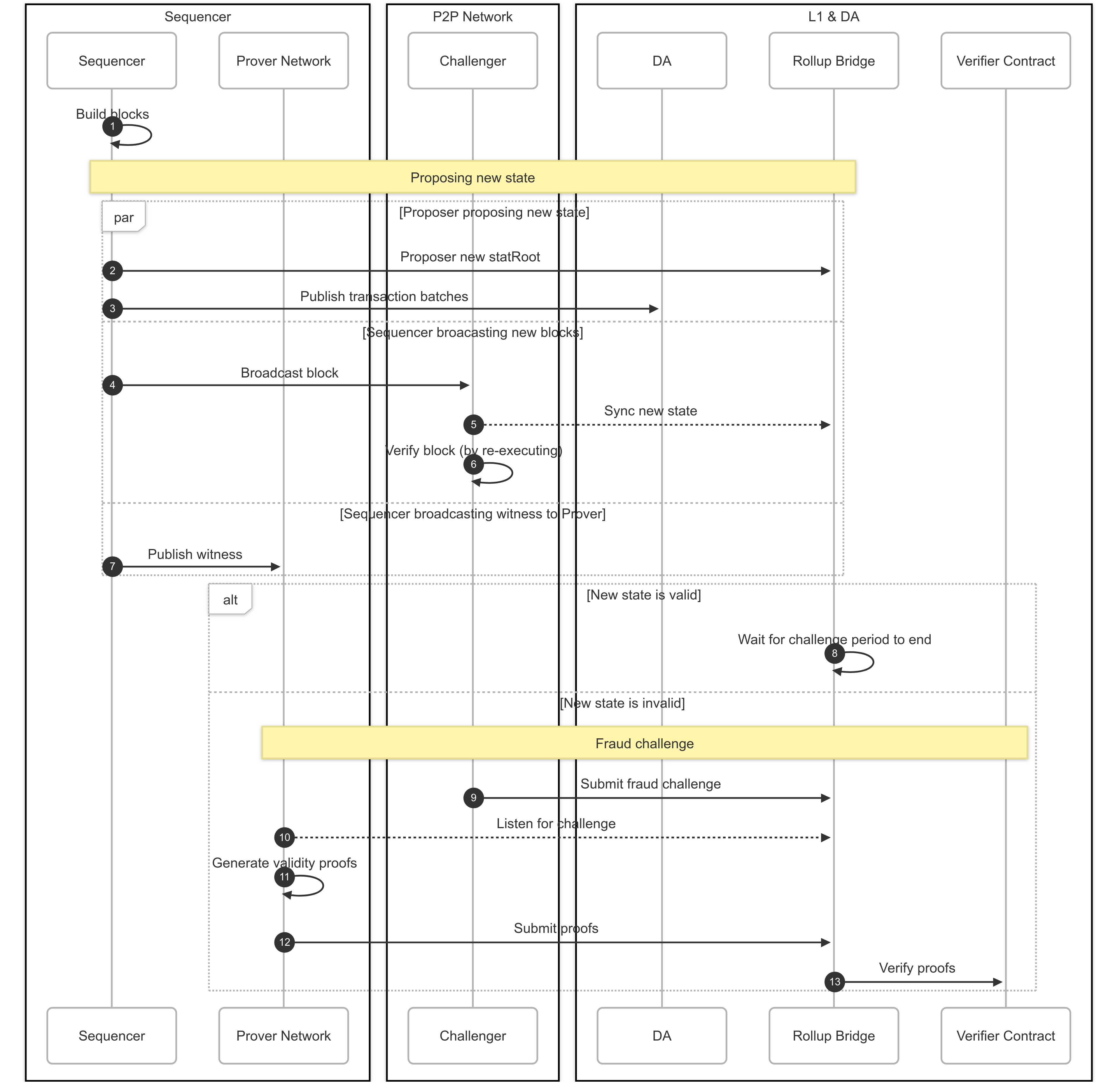Hybrid Rollup
At the beginning, we adopted an optimistic design primarily due the simplicity of the optimistic approach and the limitations of zero-knowledge (ZK) proving technology. At that time, simulating an EVM machine with ZK was not feasible, and ZK proving was unable to meet the desired throughput demands. Optimistic rollups, on the other hand, offered a simpler and more scalable solution.
However, the optimistic approach has its drawbacks. Optimistic rollups publish state commitments to the L1 without any proof of the validity of these commitment. To maintain security, these commitments must go through a fraud challenge period (typically 7 days) until they are considered final. This challenge period is sufficient to make sure any misbehaviors of the sequencers can be detected. The current fraud challenge process is complex and time-consuming, requiring significant interactions or unfriendly to challengers.
With recent advancements in the ZK ecosystem, we are now able to prove an EVM block in an order of minutes and transitioning to a full ZK rollup is feasible. Nevertheless, generating validity proofs is not always ideal.
- Validity proofs offer fast finality but the proving performance might not keep up with our execution client on real-time proving.
- Verifying a validity proof on the L1 is expensive. If we do this frequently, users have to bear this cost, and thus, increase the transaction cost to users.
- Furthermore, as long as the sequencer behaves honestly, we will never need to use fraud proofs or validity proofs.
Therefore, we consider a hybrid approach in which we still adopt the optimistic design but utilizing ZK to generate validity proofs for a state commitment if challenged. In its simplest form, our approach is an optimistic rollup but with validity proofs.
The Workflow
The following diagram depicts the simplified flow of the hybrid approach. 
If anyone spots an invalid state commitment, he can initiate a challenge request and the remaining responsibility is at the sequencer side. The sequencer must (or ask external provers to) generate a validity proof for the required state transition and submit it to L1 attestation. Failure to generate this validity proof on time will get the sequencer slashed, and thus losing his stake.
Implications
The hybrid rollup approach represents a significant advancement in blockchain scaling solutions. By combining the best aspects of optimistic and ZK rollups, it offers a more efficient, secure, and user-friendly experience.
Shorter challenge period (hence faster finality). Validity proofs are only required once we have a challenge. Most of the time (99.9999%), we do not need to generate validity proofs. If a challenge is invoked, the sequencer than has an additional window to submit the required validity proof. The additional window time should be on an order of the maximum proving time for the sake of security.
Simple and robust fraud mechanism. ZK validity proofs appear to be more robust than fraud proofs and there are several ZK rollups that have been running on the mainnet. With this approach, a challenger can just focus on keeping up with the chain progress and identifying the incorrect state transition (same as the re-executing fraud proofs), no other interaction is required.
Cost saving. The cost for users is the same as in an optimistic rollup and operational costs are lower than a ZK rollup. This is because users do not have to bare the cost of validity proof generation. While ZK rollups have to bear the cost of generating validity proofs for every state transition, even if there is no transaction; this is not required in a hybrid mode.